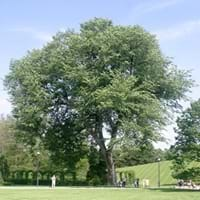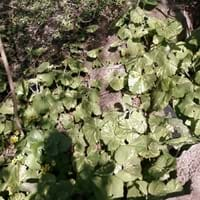Life Span
Perennial
Perennial
Origin
North America
China, Japan, Korea
Types
Water elm
Not Available
Habitat
Floodplains, Hillside, stream banks, Swamps, Upland
gardens, Grassland, Homesteads, Open areas
USDA Hardiness Zone
3-9
5-9
Sunset Zone
1a, 1b, 2a, 2b, 3a, 3b, 4, 5, 6, 7, 8, 9, 10, 11, 14, 15, 16, 17, 18, 19, 20, 21
2a, 2b, 3a, 3b, 4, 5, 6, 7, 8, 9, 10, 14, 15, 16, 17, 18, 19, 20, 21, 22, 23, 24
Habit
Upright/Erect
Clump-Forming
Flower Color
Green
Light Yellow, Ivory
Flower Color Modifier
Bicolor
Bicolor
Fruit Color
Tan
Not Available
Leaf Color in Spring
Light Green
Green, Light Green, Light Yellow, Ivory
Leaf Color in Summer
Dark Green
Green, Light Yellow, Ivory
Leaf Color in Fall
Light Yellow
Green, Light Yellow, Ivory
Leaf Color in Winter
Not Available
Not Available
Leaf Shape
Oblique base
Round
Plant Season
Spring, Summer, Fall, Winter
Spring, Summer, Fall
Sunlight
Full Sun
Partial shade, Full Shade
Type of Soil
Loam
Clay, Loam, Sand
The pH of Soil
Acidic, Neutral
Acidic, Neutral, Alkaline
Soil Drainage
Average
Poorly Drained
Bloom Time
Early Spring
Early Spring, Late Winter
Tolerances
Cold climate, Drought, Pollution, Salt
Wet Site
Where to Plant?
Ground
Ground, Pot
How to Plant?
Rooted stem cutting, Seedlings, Stem Planting
Divison, Stem Planting
Plant Maintenance
Low
Medium
Watering Requirements
Average Water Needs, Requires regular watering, Requires watering in the growing season, Water Deeply
Allow soil to be completely dry in between waterings, Keep ground moist, Needs 2-3 times watering per week, Over-head watering, Requires watering in the growing season
In Summer
Ample Water
Lots of watering
In Spring
Average Water
Moderate
In Winter
Average Water
Average Water
Soil pH
Acidic, Neutral
Acidic, Neutral, Alkaline
Soil Type
Loam
Clay, Loam, Sand
Soil Drainage Capacity
Average
Poorly Drained
Sun Exposure
Full Sun
Partial shade, Full Shade
Pruning
Remove dead branches, Remove dead or diseased plant parts, Remove hanging branches
Remove deadheads, Requires very little pruning, Shape and thin as needed
Fertilizers
Fertilize every year, fertilize in growing season, Nitrogen, Phosphorous, Potassium
All-Purpose Liquid Fertilizer
Pests and Diseases
Bark beetles, Beetles, Borers, Mites, Moth, Red blotch, Scale
Pests and diseases free, Red blotch
Plant Tolerance
Cold climate, Drought, Salt
Wet Site
Flowers
Insignificant
Showy
Flower Petal Number
Single
Not Available
Foliage Texture
Medium
Bold
Foliage Sheen
Matte
Glossy
Attracts
Not Available
Not Available
Allergy
allergic reaction, Asthma
no allergic reactions
Aesthetic Uses
Landscape Designing
Showy Purposes
Beauty Benefits
No Beauty Benefits
Not Available
Environmental Uses
Absorbs greenhouse gases, Absorbs huge amounts of CO2, Air purification, Food for birds, Forms dense stands, Nesting sites for birds, Prevent Soil Erosion, Shelter for wildlife, Wildlife
Air purification
Medicinal Uses
Antispasmodic, Astringent
No Medicinal Use
Part of Plant Used
Bark, Stem, Tree trunks, Wood
Whole plant
Other Uses
Used as firewood, Used for woodware, Used in biomass, Used in construction, Used in Furniture, Used in paper industry, Used in pulpwood and lumber production, Wood is used for making furniture, Wood is used for ship building, Wood is used fore making tools, Wood is used in construction, Wood log is used in making fences
Not Available
Used As Indoor Plant
No
Yes
Used As Outdoor Plant
Yes
Yes
Garden Design
Feature Plant, Shade Trees, Street Trees
Bog Garden, Container, Feature Plant, Water Gardens
Botanical Name
ULMUS americana
PETASITES japonicus 'Variegatus'
Common Name
American Elm
Giant Butterbur, Japanese Butterbur, Variegated Butterbur
In Hindi
अमेरिकी एल्म
variegated butterbur
In German
amerikanische Ulme
bunte Pestwurz
In French
orme d'Amérique
pétasite panachée
In Spanish
olmo americano
butterbur abigarrado
In Greek
American Elm
διαφοροποιημένα butterbur
In Portuguese
olmo americano
butterbur variegada
In Polish
Amerykański wiązu
barwny Lepiężnik
In Latin
Latin ulmo
varius butterbur
Phylum
Magnoliophyta
Not Available
Class
Magnoliopsida
Not Available
Family
Ulmaceae
Asteraceae
Clade
Angiosperms, Eudicots, Rosids
Angiosperms, Asterids, Eudicots
Tribe
Not Available
Senecioneae
Subfamily
Not Available
Not Available





